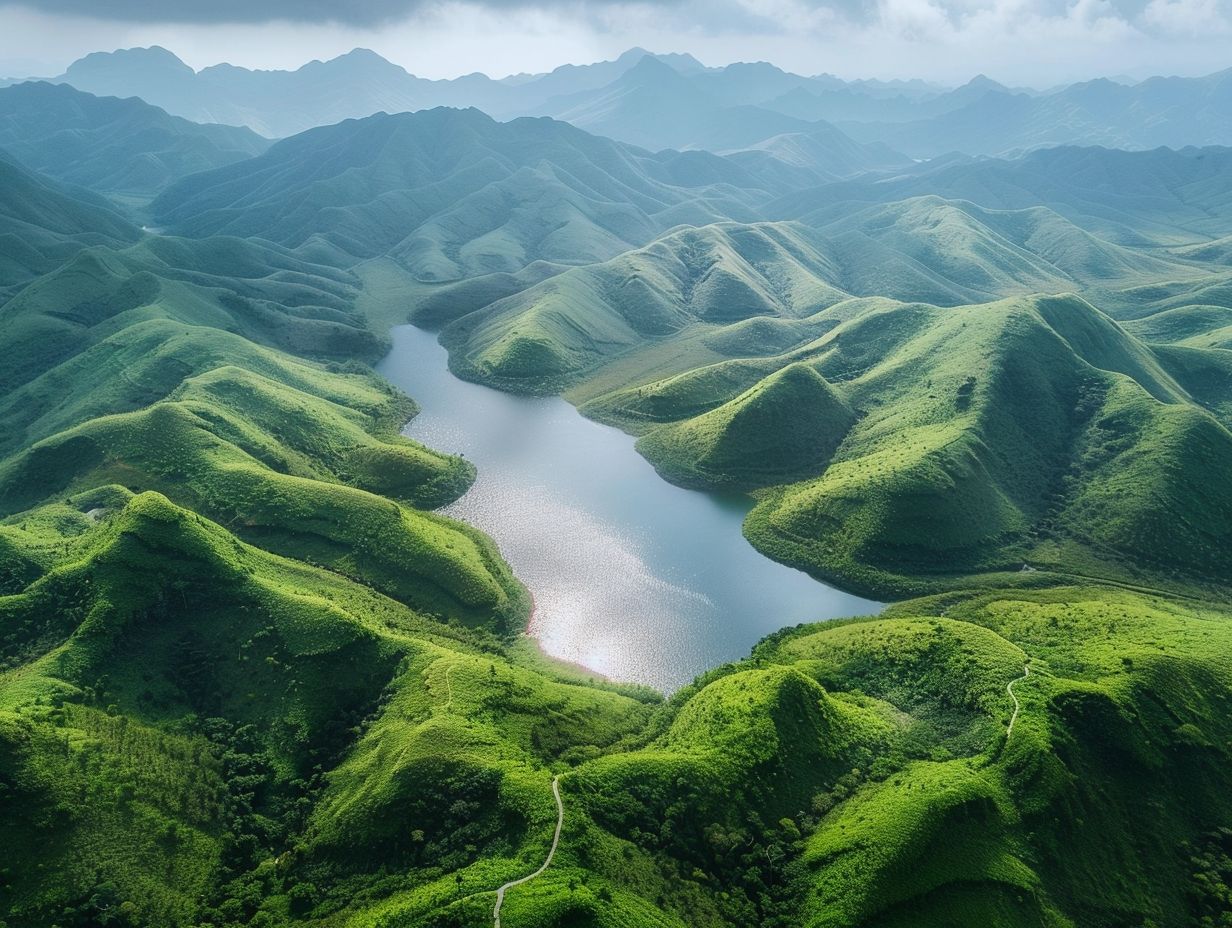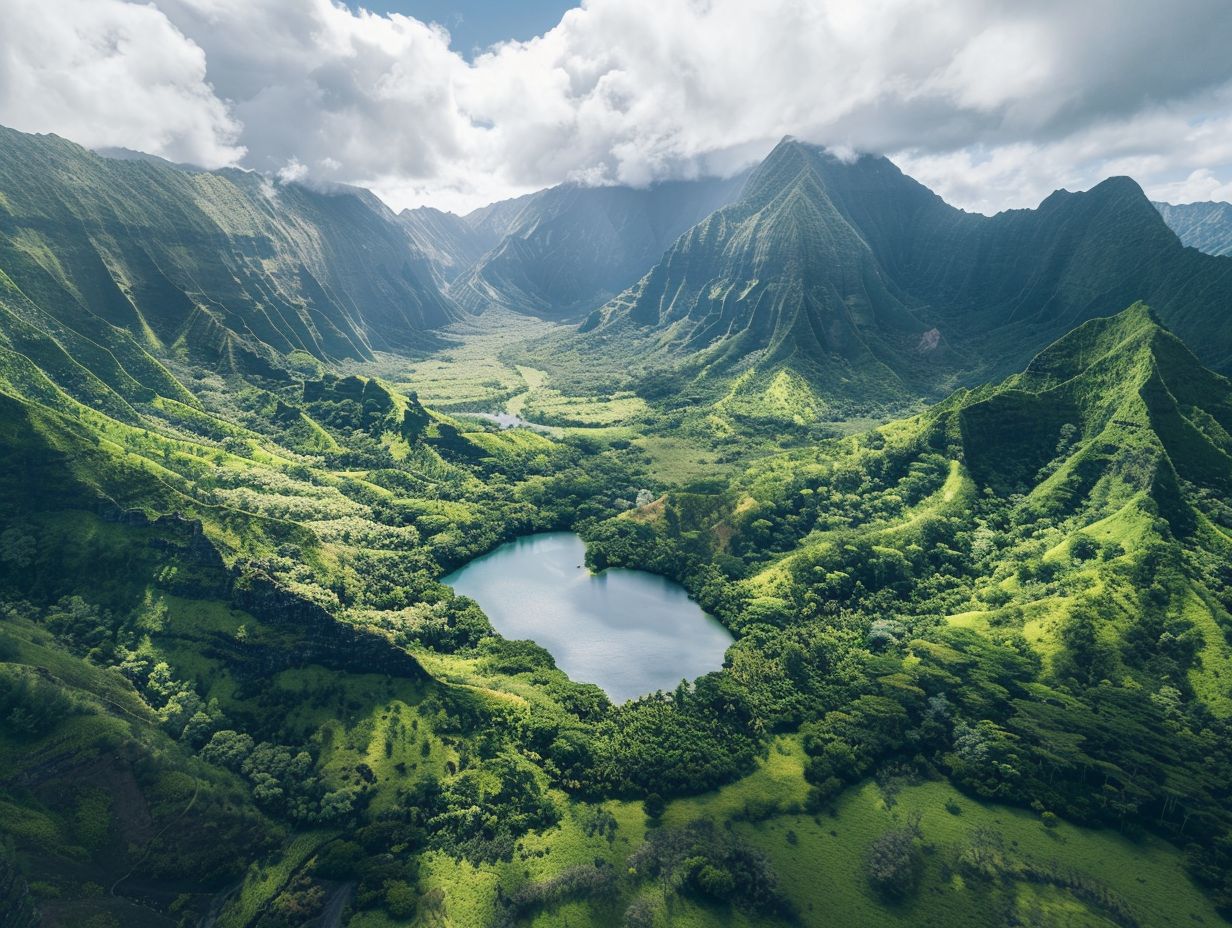
Mahale Mountains National Park
Nestled along the shores of Lake Tanganyika in Tanzania, Mahale Mountains National Park boasts a stunning landscape of dense forests, crystal-clear waters, and towering peaks.
Explore the rich history and vibrant culture of this unique park, as well as the diverse wildlife and biodiversity that call it home.
From chimpanzees to colorful bird species, visitors to Mahale Mountains National Park can immerse themselves in a truly wild experience.
Learn about the conservation efforts being made to protect this natural wonder and how you can contribute to its preservation.
Key Takeaways:

- Mahale Mountains National Park is located in Tanzania, along the shores of Lake Tanganyika, and is known for its stunning landscape of mountains, forests, and beaches.
- The park has a rich history and is home to the local Tongwe people, who have a deep connection to the land and its wildlife.
- Visitors to Mahale Mountains National Park can experience a diverse range of wildlife, including chimpanzees, leopards, and hundreds of bird species, in its biodiverse ecosystem.
Location and Geography of Mahale Mountains National Park
Mahale Mountains National Park is situated in Tanzania, on the eastern shores of Lake Tanganyika, encompassing diverse forests and unique habitats in a remote location.
The park’s location adjacent to Lake Tanganyika offers visitors the chance to explore the park’s pristine shores and partake in activities like boat safaris, fishing, and even snorkeling in the crystal-clear waters.
This remote area is home to an array of forest ecosystems, including rainforests, montane forests, and miombo woodlands, providing a habitat for a rich diversity of flora and fauna.
The lush vegetation and rugged terrain create a haven for a variety of wildlife species such as chimpanzees, antelopes, and numerous bird species.
Where is Mahale Mountains National Park Located?
Mahale Mountains National Park is located in western Tanzania, bordering Lake Tanganyika, in a remote and pristine setting.
The park’s geographical coordinates lie approximately between latitudes 6°08′ and 7° 42′ S and longitudes 29° 43′ and 30° 56′ E.
This positioning places Mahale Mountains National Park in a unique location, providing visitors with stunning views of the crystal-clear waters of Lake Tanganyika.
The park’s remote and isolated environment offers a serene retreat for wildlife enthusiasts and adventurers seeking unparalleled opportunities for trekking, chimpanzee tracking, and birdwatching.
What is the Landscape of Mahale Mountains National Park?
The landscape of Mahale Mountains National Park is characterized by lush forests, diverse habitats, and rich ecological systems supporting a variety of flora and fauna.
Within the park’s boundaries, towering mahogany trees create a canopy that shelters a remarkable array of wildlife, from playful chimpanzees swinging through the branches to elusive leopards.
The diverse habitats range from verdant montane forests to crystal-clear mountain streams teeming with freshwater fish, providing a home for numerous endemic species.
The intricate ecological balance in Mahale Mountains National Park ensures the survival of these plants and animals, showcasing the resilience and interconnectedness of nature’s wonders.
History and Culture of Mahale Mountains National Park
The history and culture of Mahale Mountains National Park are deeply intertwined with the local communities and their traditions, creating a rich tapestry of heritage within the park’s boundaries.
Established in 1985, Mahale Mountains National Park holds a significant place in the nation’s conservation efforts serving as a testament to the enduring ties between nature and human society.
The park’s history is imbued with stories of the Waholoholo, Watongwe, and Wabende tribes who have inhabited the area for centuries, shaping the land with their customs and practices.
The fascinating blend of tribal rituals, artistic expressions, and spiritual beliefs found in Mahale Mountains National Park showcases the intrinsic relationship between nature and culture.
What is the History of Mahale Mountains National Park?

The history of Mahale Mountains National Park traces back to its establishment by the Tanzania National Parks Authority, aiming to conserve the unique ecosystem and wildlife within the region.
Established in 1985, the park holds a significant place in the conservation efforts of Tanzania.
Originally founded with the primary goal of safeguarding the habitat of the Mahale chimpanzees, the park has since expanded its conservation initiatives to protect a wide array of flora and fauna.
Over the years, the Tanzania National Parks Authority has played a pivotal role in the management and development of the park, working closely with local communities and conservation organizations.
What is the Culture of the Local People in Mahale Mountains National Park?
The culture of the local people in Mahale Mountains National Park, including the Batongwe tribe and Holoholo people, is defined by unique traditions, cultural practices, and a deep connection.
These indigenous communities have rich histories that are reflected in their daily rituals, dances, and ceremonies, which often pay homage to their ancestors and the spirits of the land.
Traditional healing practices and herbal remedies play a significant role in their healthcare systems, showcasing a profound understanding of the local flora and fauna.
Their interactions with the park’s ecosystem are deeply intertwined with their spiritual beliefs, fostering a harmonious relationship between humans and nature.
The Batongwe tribe and Holoholo people frequently engage in communal activities such as traditional music performances and craft-making, preserving their cultural heritage for future generations.
Wildlife and Biodiversity in Mahale Mountains National Park
The wildlife and biodiversity of Mahale Mountains National Park are incredibly diverse, with a significant primate population, including endemic species, contributing to the park’s ecological richness.
Located in Tanzania, Mahale Mountains National Park shelters a wide array of flora and fauna, making it a haven for nature enthusiasts and researchers alike.
The park is renowned for its chimpanzee population, offering visitors a unique opportunity to witness these intelligent creatures in their natural habitat.
Besides the primates, the park is home to other remarkable wildlife such as leopards, giraffes, and a plethora of bird species.
The ecosystem of Mahale Mountains National Park showcases a delicate balance between various species, highlighting the interconnectedness of the natural world.
The landscape ranges from lush forests to crystal-clear lakes, providing a diverse habitat for the diverse wildlife.
What Animals Can Be Found in Mahale Mountains National Park?
Mahale Mountains National Park is home to a variety of animals, including chimpanzees, primates, and monkeys, thriving in its diverse habitats and contributing to the rich fauna of the region.
Within the park, one can encounter a myriad of wildlife species such as elephants, leopards, and buffaloes coexisting harmoniously with the primates.
The presence of these animals highlights the interconnectedness of the ecosystem, where each species plays a crucial role in maintaining the ecological balance.
Notably, the chimpanzees in Mahale Mountains National Park are of great importance, as they are one of the main attractions for visitors and researchers alike.
What is the Biodiversity Like in Mahale Mountains National Park?
The biodiversity in Mahale Mountains National Park is characterized by endemic species, diverse forests, and a plethora of bird species, underscoring the importance of habitat preservation within the park.
The park’s unique biodiversity is a result of its endemic species, which are found nowhere else in the world, making this ecosystem truly exceptional.
The diverse forests within the park provide vital habitats for a wide range of flora and fauna, supporting the delicate balance of the ecosystem.
The abundance of bird species in Mahale Mountains National Park highlights its significance as a haven for avian biodiversity. The varied landscapes and habitats within the park offer a sanctuary.
Activities and Attractions in Mahale Mountains National Park

Mahale Mountains National Park offers a range of activities and attractions for visitors, including wildlife viewing, trekking adventures, and immersive experiences in the heart of nature.
Visitors at the park can embark on guided treks through lush forests to catch a glimpse of the diverse wildlife that calls Mahale home.
The park is renowned for its population of chimpanzees, offering a unique opportunity to observe these fascinating primates in their natural habitat.
Exploring the picturesque landscapes and serene shores of Lake Tanganyika, visitors can enjoy boat safaris, fishing excursions, or simply relaxing on the sandy beaches.
What Activities Can Be Done in Mahale Mountains National Park?
Visitors to Mahale Mountains National Park can engage in various activities, including primate tracking expeditions, birdwatching tours, camping under the stars, and snorkeling adventures.
Primate tracking in Mahale Mountains offers a unique opportunity to observe chimpanzees in their natural habitat, providing an unforgettable wildlife encounter.
Birdwatching enthusiasts can spot a diverse range of bird species amidst the lush greenery, making it a paradise for ornithologists.
Camping in the park allows visitors to immerse themselves in the serene surroundings as well as snorkeling in Lake Tanganyika unveils a vibrant underwater world.
What are the Main Attractions in Mahale Mountains National Park?
The main attractions of Mahale Mountains National Park include chimpanzee habituation experiences, relaxing at Mwagusi beach, close wildlife encounters, and exploring the enchanting forest trails.
Visitors to Mahale Mountains National Park are mesmerized by the once-in-a-lifetime opportunity to immerse themselves in the world of these incredible primates during chimpanzee habituation experiences.
Relaxation takes a new form at the pristine Mwagusi beach, offering a serene escapes. The chance for close wildlife encounters is unparalleled with sightings of diverse species.
Exploring the park’s forest trails unveils a hidden world of lush vegetation, unique flora, and the captivating sounds of nature echoing through the trees.
Conservation Efforts in Mahale Mountains National Park
Conservation efforts in Mahale Mountains National Park play a crucial role in safeguarding this protected area, ensuring the preservation of its unique ecosystem and biodiversity.
By actively monitoring wildlife populations and habitats, conservation initiatives within the park help in maintaining the delicate balance of nature.
Through sustainable management practices such as community-based ecotourism and anti-poaching strategies, the park strives to protect endangered species.
The implementation of research programs and educational campaigns raises awareness about the importance of environmental conservation and encourages visitors to appreciate.
What Conservation Efforts are Being Made in Mahale Mountains National Park?
Various conservation efforts are being made in Mahale Mountains National Park, ecological studies focused on the Albertine Rift region, and initiatives for habitat restoration and protection.
The Mahale Mountains Wildlife Research Center plays a pivotal role in studying the wildlife populations and their habitats, contributing essential data to conservation strategies.
Through comprehensive field surveys and monitoring programs, researchers are gaining insights into the behavior and ecology of various species within the park.
Ongoing initiatives are dedicated to restoring degraded habitats and safeguarding critical ecosystems, ensuring the long-term sustainability of biodiversity in the region.
How Can Visitors Contribute to Conservation in Mahale Mountains National Park?

Visitors can actively contribute to conservation efforts in Mahale Mountains National Park by engaging in sustainable tourism practices and supporting wildlife protection programs.
One of the key ways visitors can get involved in sustainable tourism at Mahale Mountains National Park is by choosing eco-friendly accommodations that prioritize conservation practices.
By staying at lodges and camps that utilize renewable energy sources, minimize waste generation, and support local communities, visitors can reduce their ecological footprint.
Visitors can enhance their wildlife protection awareness by joining guided tours led by experienced park rangers, learning about the importance of preserving the diverse flora and fauna within the park.
Engaging in community initiatives such as tree planting projects and environmental education programs allows visitors to directly contribute to the conservation efforts and foster a sense of responsibility.
Frequently Asked Questions
1. What is Mahale Mountains National Park?
A: Mahale Mountains National Park is a protected area located in western Tanzania. It is known for its diverse wildlife and stunning mountain scenery.
2. How big is Mahale Mountains National Park?
A: Mahale Mountains National Park covers an area of 1,613 square kilometers.
3. What kind of animals can be found in Mahale Mountains National Park?
A: Mahale Mountains National Park is home to a variety of animal species including chimpanzees, leopards, bushbucks, elephants, and over 300 species of birds.
4. How do I get to Mahale Mountains National Park?
A: The most common way to reach Mahale Mountains National Park is by flying to Kigoma airport and then taking a boat ride to the park. There are also charter flights available from major cities in Tanzania.
5. Can I go on a safari in Mahale Mountains National Park?
A: Yes, there are safari options available in Mahale Mountains National Park. However, the main focus of the park is trekking to see the chimpanzees in their natural habitat.
6. Is it safe to visit Mahale Mountains National Park?
A: Yes, Mahale Mountains National Park is generally safe for visitors. However, it is important to follow park rules and guidelines, such as not approaching or feeding wild animals, to ensure a safe and enjoyable experience.